This site is part of various affiliate programs. Links may give us a small compensation for any purchases you make, at no additional cost to you. Please read the disclaimer policy for full details.
My top choice is the Canon PIXMA PRO-200 but some of the other choices below might be more appropriate depending on the quality and volume that you print at.
Creating drawings, fine art, graphic designs or any other kind of artwork on your computer and viewing on your monitor can be fun, but it doesn’t compare to seeing physical printer art and holding your art in your hands.
There’s such a variety of art printers on the market that it can be difficult to know which is the best printer for artists, particularly if you are looking for a specific kind of printer, such as those for photos or cardstock, or just the overall best art printer.
This article focuses on the best printers for fine art prints, which are make giclee prints using archival inks on high-resolution, large format printers.
What is the Best Printer for Art Prints in 2023?
The Best Home Printer for Art Prints
- Easily deals with a wide range of art papers and canvas
- Newest model, an update on the Pro-100
- Vibrant, sharp prints with beautiful colors
- Low ink cost per sheet
- Up to 13 inch wide prints possible
- Borderless printing up to A3
- Dye-based inks, so very slight color cast for black and white images under different light sources, and less print longevity (but still decades)
What’s the Best Printer for Art Prints on a Budget?
The Best Printer for Art Prints on a Budget
- Professional-level, excellent quality prints
- Fantastic color accuracy from the Claria HD inks
- Designed for home users who want lab-level prints without breaking the budget
- Relatively fast print speeds
- High cost-per-print
Comparisons of the Best Printers for Making Art Prints
Compare the best printers for digital art and for art prints below, and read the full reviews towards the bottom of the article.
Printer | Image | Pros / Cons | No. of Inks & Ink Life | Max. Print Width | Check Price |
| 2 inks 65 sheets | 8.5 inches | |||
| 10 inks 20 sheets | 13 inches | |||
[Best Budget Printer for Artists] |
| 6 inks 70 sheets | 13 inches | ||
| 12 inks 700 sheets | 17 inches | |||
| 10 inks 500 sheets | 13 inches | |||
[Best Printer for Art Prints] |
| 8 inks 500 sheets | 13 inches |
What is a Fine Art Print?
Before we delve into what makes the best fine art printer, we should first define what are fine art prints.
Fine art prints primarily differ from photographic prints in the type of printer paper used, with fine art paper being acid-free, and then being printed using the highest quality archival inks by high resolution large format printers
Standard home printers and cheaper photo paper cannot match the quality levels you need to produce top-of-the-line fine art prints, and will see color fading over the years.
By contrast, the best giclee prints (giclee being the term for fine art prints made by inkjet printers) will last for decades, if not longer, with no fading of the inks, and no cracking or yellowing of the paper thanks to it being acid free.
This makes fine art paper suitable for all types of wall art, and is especially well-suited to those selling their art, who want their prints to outlast them.
Read More: See the best fine art paper for photography.
Dye Inks vs Pigment Inks
Many people who regularly print art images think that pigment inks are the pinnacle of printing technology, and can look down on dye-based inks, but this is based on outdated information.
The one advantage that pigment inks used to have over dye inks is that they were typically longer lasting under adverse conditions, like strong sunlight. But modern dye-based inks like those found on the Canon Pro-200 are nearly their equal in longevity, and will easily last for decades, if not longer.
Many fine art printers use dye-based inks, which are now preferable as they reflect light back more evenly that pigment-based inks and produce a more vibrant image, which is reflected in printer test pages.
Essentially, the difference between dye inks vs pigment inks is a trade-off between color quality and the life of a print, but with dye prints now lasting nearly the length of time of pigment prints, I prefer the greater image quality of dye-based inks.
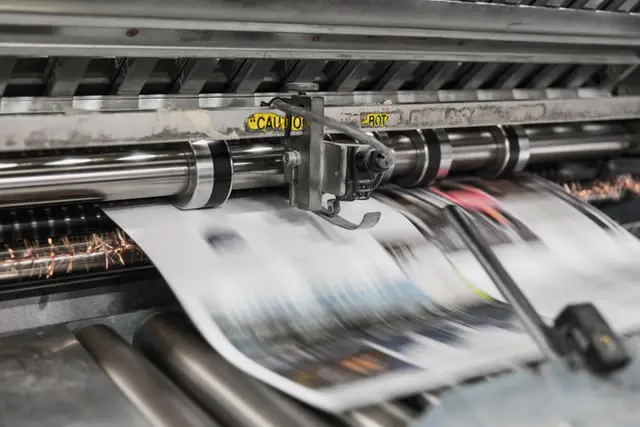
What Makes the Best Printer for Artists?
In order to find good printers for art prints, you need to first consider the key characteristics that define a high quality art printer.
The criteria that define the best giclee printers are:
- Can the printer use Fine Art Paper?
- What Print Sizes can the printer achieve?
- What Resolution does the printer use?
- Is the printer Color Accurate with archival inks?
- How many Sheets per Cartridge can be printed?
Fine Art Paper Styles & Weights
Fine art paper is most commonly produced from cotton, rag or fiber, resulting in paper with a distinctive texture that can range from the lighter textured Moab Entrada up to the heavily textured Hahnemuhle Bamboo.
These show color tones differently, as they are rarely pure white, so you should always endeavor to get your hands on a swatchbook from your preferred paper manufacturer before putting in an order for expensive paper.
Paper for fine art prints also tends to come in different weights, which can be a problem for some printers. For example, Moab Entrada is available from 190 gsm to 300 gsm (to convert between gsm and lbs, see my paper weight conversion table).
The heavier paper would jam standard home printers, and even the lighter paper could be a problem, so you might want to first decide on the maximum paper weight you think you will be printing on, before purchasing a printer.
All of the archival printers in this article are capable of printing on heavy paper, and a number of them would even be suited as professional canvas printers, which is typically the thickest fine art paper available.
Print Sizes
If you are looking for the best printer for illustrators or the best printer for watercolor paper, it’s likely that you will want to print very large images.
Although most high quality art printers can make essentially unlimited length prints, they are all restricted by their width. As you expect, the wider the print that you want to make, the more expensive the printer.
A sweet spot in print width tends to be around 13 inches in terms of performance versus cost. These are still classed as wide-format prints and are suitable for most artists, and are what the best giclee printer in this article can manage.
Bear in mind that the larger the print, the longer the print time, so that a 17 inch wide print from the Canon Pro 1000 would take around 10 minutes, while a standard 6×4 would take about a minute and a half. This only matters if you are printing for professional uses, and you need to produce a certain volume of prints per day.

Print Resolution
You need a high resolution printer if you want your fine art prints to look like they were made by someone who takes their art seriously.
Print resolution is measured in dots per inch (DPI), and refers to how tightly spaced the individual dots of color on the print are, with a higher DPI meaning that prints can contain very fine detail, and do not begin to look fuzzy as you get closer to them. This is less a concern for smaller prints, but is very important when you get to wide format prints.
Inkjet printers for art prints are preferred over laser printers for art prints precisely because an inkjet, or giclee printer, can print at a much higher DPI which gives a noticeably higher quality image at close range.
Printer Color Accuracy
Standard home printers often only have two ink cartridges: one color and one black. But art printers like those reviewed here require the ability to create much more subtle colors, and so have multiple ink cartridges, breaking colors down into their constituent tones and shades.
For example, the Canon Pro 1000 has 11 inks in total and this helps it to create the outstanding print quality you get from this printer.
The number of printer inks is now the only characteristic that defines color accuracy in the final print though. You should also be sure to use a color accurate monitor, and an appropriate ICC color profile to ensure that what you see on screen will match what comes out of the printer.
These ICC profiles help convert the RGB colors you see on your monitor to the CMYK colors that your printer will use, and can be easily added to Photoshop, or your art program of choice. This is a crucial step that you should not overlook.
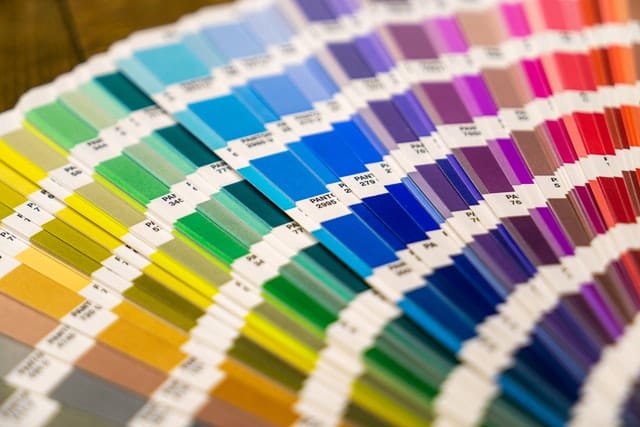
Print Economy
One of the most important considerations for any printer is the number of prints that it can produce per ink cartridge. With 11 ink printers like the Canon Pro-1000, a full set of ink is into the low three figures in price, so you want to be sure that you get good value for money.
Many of the more professional printers for art like the Canon Pro 300 are designed for regular, daily printing, and essentially to be in an always-on state. In this situation, the ink life tends to be good, but if they are used infrequently, ink life is less good. This is because they run a cleaning program with every startup cycle that empties the print head nozzles, using valuable ink.
It is for this reason that I would recommend more prosumer printers like the Canon Pro 200 for most people, as this is designed for more infrequent use, and doesn’t waste so much ink on startup and shutdown.
You can see average print life in the full reviews below, along with costs to replace the ink cartridges. Bear in mind that you often don’t need to replace a full set, but can replace individual inks as you use them up, reducing costs.
Generic ink tends to be cheaper than official ink, but Epson printers in particular are very fussy about accepting generic ink, with Epson regularly sending firmware updates to stop the generics working. These inks are also of lower quality, and so are less suitable for fine art prints.
Reviews of the Best Art Printers 2023
These full reviews of the best printers for printing art prints are ordered from best to worst, although bear in mind that this is entirely subjective, and you might find that for your specific use-case, one of the lower ranked printers might be more suitable.
1. Canon PIXMA PRO-200
-
Specifications:
- Cost:$$$
- No. of Inks: 8
- Ink Life: From 100 – 500 (A2 prints)
- Ink Cost (Official / Generic): ~ $160 ($20 x 8) – Check Price / N/A
- Max. Print Width: 13 inches
- DPI: 4800 x 2400
- Connectivity: WiFi, Ethernet, USB
- Size: 25.2″ x 15″ x 7.9″
- Pros:
- Newest model, an update of the Pro-100
- Vibrant, sharp colors thanks to the dye-based inks
- More budget version of the Pro-300, with nearly the same quality of prints
- Low ink cost per sheet
- Borderless printing up to A3
- Lighter than the Pro-300, but the same size prints
- Very long, panoramic prints possible
- Cons:
- Dye-based inks rather than pigment inks on the Pro-300, so slightly less print longevity
- Difficult to find compatible inks due to how new the printer is
The Canon Pro-200 is for me the best printer for artists, with its exceptional print quality that has a luminosity and color intensity that you just don’t find elsewhere, with a depth of color that is almost lifelike.
You can make very large prints, up to 13 inches wide and essentially as long as you like, by attaching a roll of paper to the manual feed slot.
Comparing this to the more expensive Canon Pro-300, you lose out on two inks, including a type of black, plus the chroma optimizer, and the inks in the 200 are dye-based, rather than pigment inks.
Historically, pigment inks are longer lasting, but Canon claim their official dye inks have a 100 year lifespan, so this is really a non-issue, provided you use official ink. Generic dye inks tend to have a much shorter lifespan, so if you can’t afford the relatively high official ink price, you might be better off looking to another printer, like the Canon Pro-300.
Because of the extra black ink in the Pro 300, that printer is also preferred if you are printing a lot of black and white prints.
But part of the reason that the Canon Pro 200 is the best Canon printer for art prints and the best printer for arts and crafts is that it doesn’t waste too much ink on its cleaning cycles during startup and shutdown. With the high cost of official ink, this makes the Pro 200 much better value for money, and much more suitable for home users that won’t be printing all day, everyday.
2. Canon imagePROGRAF PRO-1000
-
Specifications:
- Cost: $$$$$$
- No. of Inks: 11 + 1 Chroma Optimizer
- Ink Life: Approx. 700 sheets (at 11″ x 17″)
- Ink Cost (Official / Generic): ~ $59 x 12 ($720) – Check Price / ~ $375 – Check Price
- Max. Print Width: 17 inches
- DPI: 4800 x 2400
- Connectivity: WiFi, Ethernet, USB
- Size: 28.5″ x 17″ x 11.2″
- Pros:
- Best canvas printer as it handles heavy paper very well
- Supports sheets up to 17 inches wide
- Absolutely stunning photo quality and brilliant color accuracy with deep blacks and perfect colors
- Pigment-based inks have superior longevity – these prints will outlast you
- Cons:
- Very large and heavy (70.5 lbs!)
- Very expensive
The Canon Pro-1000 might be an expensive printer, and is very large and heavy, but it is both the best printer for graphic design and the best large format printer for artists, handling paper up to 17 inches wide and essentially limitless in length.
The 11 pigment inks plus Chroma Optimizer deliver outstanding image quality that just can’t be beaten in today’s home printers – this even outperforms some lab printers – and the prints themselves will last for at least 100+ years.
The printer is so good in fact, that it will pick up all of the small flaws in your photos or artwork that you didn’t even notice. If nothing else, this printer will make you a better artist!
Ink life is relatively good, and you should be able to get a few hundred prints before needing replacements, but this will be reduced if you switch the printer on and off repeatedly – it is designed to be in near-constant use and this is the main problem with the printer.
If you are printing fine art prints for sale constantly, and don’t switch the printer off, then the Canon Pro 1000 is designed for you. If you are a more regular home user producing occasional prints for sale, then the Canon Pro 200 is better suited to you.
3. Canon imagePROGRAF PRO-300
-
Specifications:
- Cost:$$$$
- No. of Inks: 9 + 1 Chroma Optimizer
- Ink Life: From 100 – 500 (A2 prints)
- Ink Cost (Official / Generic): ~ $123 – Check Price / N/A
- Max. Print Width: 13 inches
- DPI: 4800 x 2400
- Connectivity: WiFi, Ethernet, USB
- Size: 25.2″ x 15″ x 7.9″
- Pros:
- The Best Archival Printer, with pigment-based inks
- Fantastic photo print quality
- Superb color accuracy and vibrancy that pops
- Reasonably priced for the quality of prints
- Smaller and lighter than the Pro-1000
- Very long, panoramic prints possible
- Cons:
- Expensive, but cheaper than the Pro-1000
- Not quite value for money when compared to the Pro-200
If you are looking for a professional printer for art prints, and a wide format printer that uses pigment-based inks at the lowest price available, then the Canon Pro 300 is it.
Although I don’t find this value for money compared to the Pro 200, which can produce the same sized prints, some may prefer the pigment inks, and are willing to pay a premium for it. You get one more ink cartridge than the Pro 200, but you would be hard pressed to see the difference in practice, unless you are heavily into black and white prints, in which case the Pro 300 really shines.
Unlike the Pro 1000, the Pro 300 is more of a home printer, designed to be switched on and off regularly and not used everyday, and this is reflected in the lower price.
So, if you are wanting long-lasting pigment-based prints, but won’t be making tens of prints a day, then the Canon Pro-300 is your best option.
4. Epson Expression Photo HD XP-15000
-
Specifications:
- Cost: $$
- No. of Inks: 6
- Ink Life: Approx. 100 sheets (black) / 70 sheets (color)
- Ink Cost (Official / Generic): $95 / ~ $59 – Check Price
- Max. Print Width: 13 inches
- DPI: 5760 x 1440
- Connectivity: WiFi, Ethernet, USB
- Size: 14.5″ x 18.7″ x 6.3″
- Pros:
- Top choice for home users wanting professional prints
- Excellent photo quality and the best budget printer for art prints
- Fantastic color accuracy from the Claria HD inks
- Relatively fast photo print speeds
- Two input trays
- Small footprint for it’s max print size
- Cons:
- High cost-per-print
- Control screen not touchscreen
- Generic inks rarely work in Epson printers
If you are looking for the best affordable printer for art prints, then you have found it in the Epson XP 15000. This is the best Epson printer for art prints because of its low price, coupled with a 13-inch max print size and lovely, vibrant colors from the Claria HD inks.
It’s pretty close to the Canon Pro-200 in quality, despite only having six inks, with most people unlikely to spot the difference between the two models, making this the best printer for art prints on a budget.
This printer is better suited to those who want to make art prints more as a hobby than as a business, as with all Epson printers, Epson regularly sends out firmware updates that block generic inks from working. For this printer, you are looking at nearly $100 for a full set of genuine inks, which offer superb color accuracy, but do not last long.
5. Epson SureColor P700
-
Specifications:
- Cost: $$$$$
- No. of Inks: 10
- Ink Life: Approx. 20 large sheets (A3+ size)
- Ink Cost (Official / Generic): Approx. $380 / N/A
- Max. Print Width: 13 inches
- DPI: 5760 x 1440
- Connectivity: WiFi, Ethernet, USB
- Size: 20.3″ x 30.3″ x 16.5″
- Pros:
- Can make huge prints
- Fantastic photo quality and color accuracy
- Fast photo printing for large prints (A3 in 2 mins 30 secs)
- Easy to use touchscreen and excellent connectivity
- Cons:
- Very expensive
- High cost-per-print & very high ink cost
- Maintenance cart can use up a lot of ink
- Comes with ‘demo’ smaller ink cartridges
The Epson P700 is another one of the more professional level printers available, and essentially is Epson’s version of the Pro-300.
It is slightly cheaper than the Pro 300, and delivers similarly excellent prints from its ten inks that match anything a pro photo lab could produce.
Like the Pro 300, there is a matte black and a photo black, designed for use on fine art papers in particular, but the maintenance cycle uses a lot of this ink when the printer is shutdown, meaning it is better suited for those who print large volumes in one go.
6. HP Envy 6055
-
Specifications:
- Cost: $
- No. of Inks: 2
- Ink Life: Approx. 130 sheets (black) / 65 sheets (color)
- Ink Cost (Official / Generic): ~ $30 – Check Price / ~ $45 – Check Price
- Max. Print Width: 8.5 inches
- DPI: 4800 x 1200
- Connectivity: Wifi, USB
- Size: 17.03″ x 14.21″ x 5.2″
- Pros:
- Very good photo print quality
- Fantastic color accuracy for the price
- Access to HP instant ink – free 5 x 7 photo prints!
- Small, compact, and easily fits on your desk
- Cons:
- Poor cost-per-print ratio
- No automatic scanning features
- No display screen
If you are specifically looking for the best printer scanner for artists, then you the HP Envy 6055 would suit you well.
Although it does not offer a wide gamut of inks like the more professional printers, this is still suitable for smaller artworks, as well as stickers and cards, being able to print borderless prints and using the integrated scanner to easily create copies.
Although the color ink cartridge will only produce about 65 prints before requiring a relatively pricey replacement, you can currently sign up for HP instant ink on buying this printer ($2.99 / month). This gives you enough ink for 50 sheets per month, plus unlimited photo prints at up to 5 x 7 inches. You still have to buy photo paper of course, but ink will be ordered by the printer using WiFi when running low, so that you never run out.
Read More:
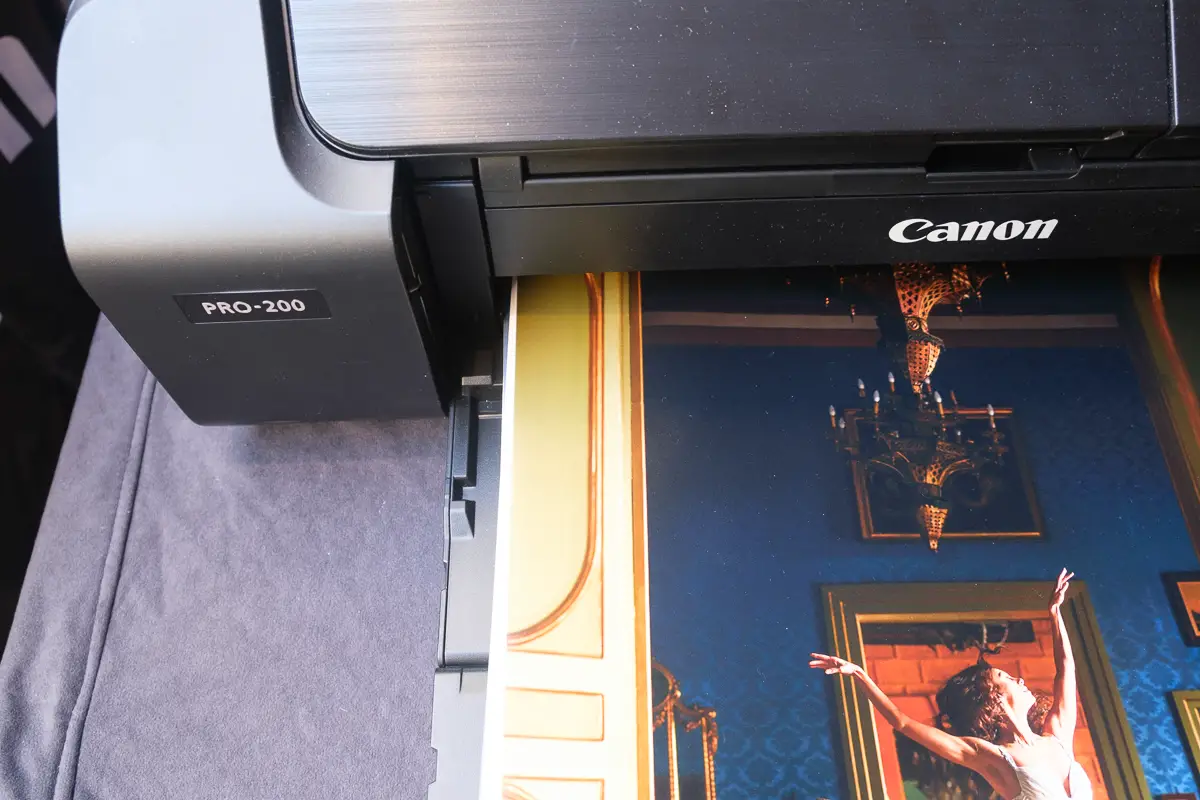
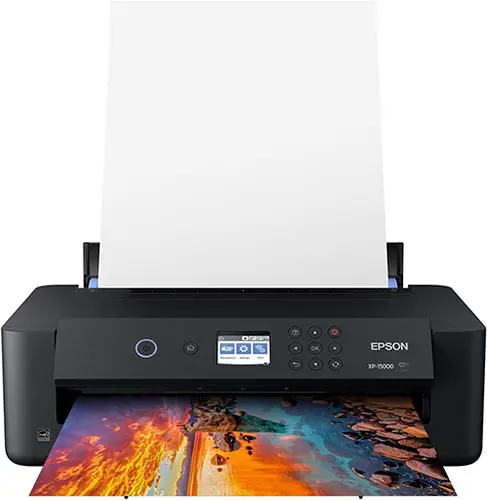
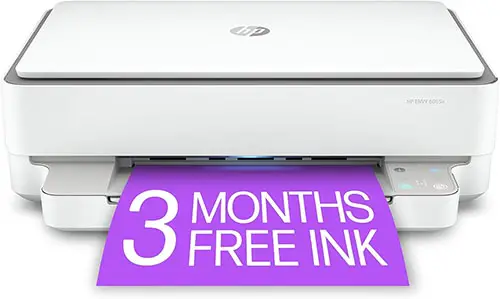
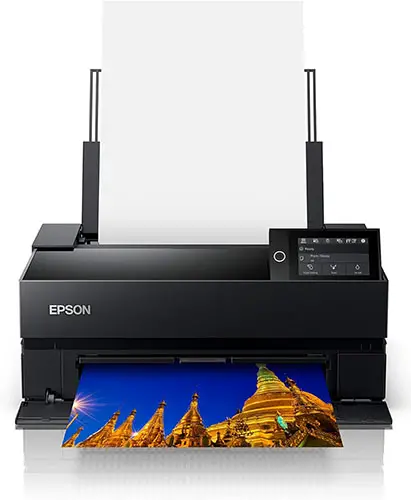

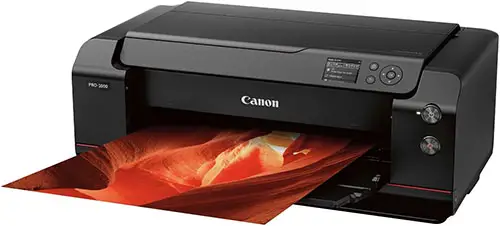
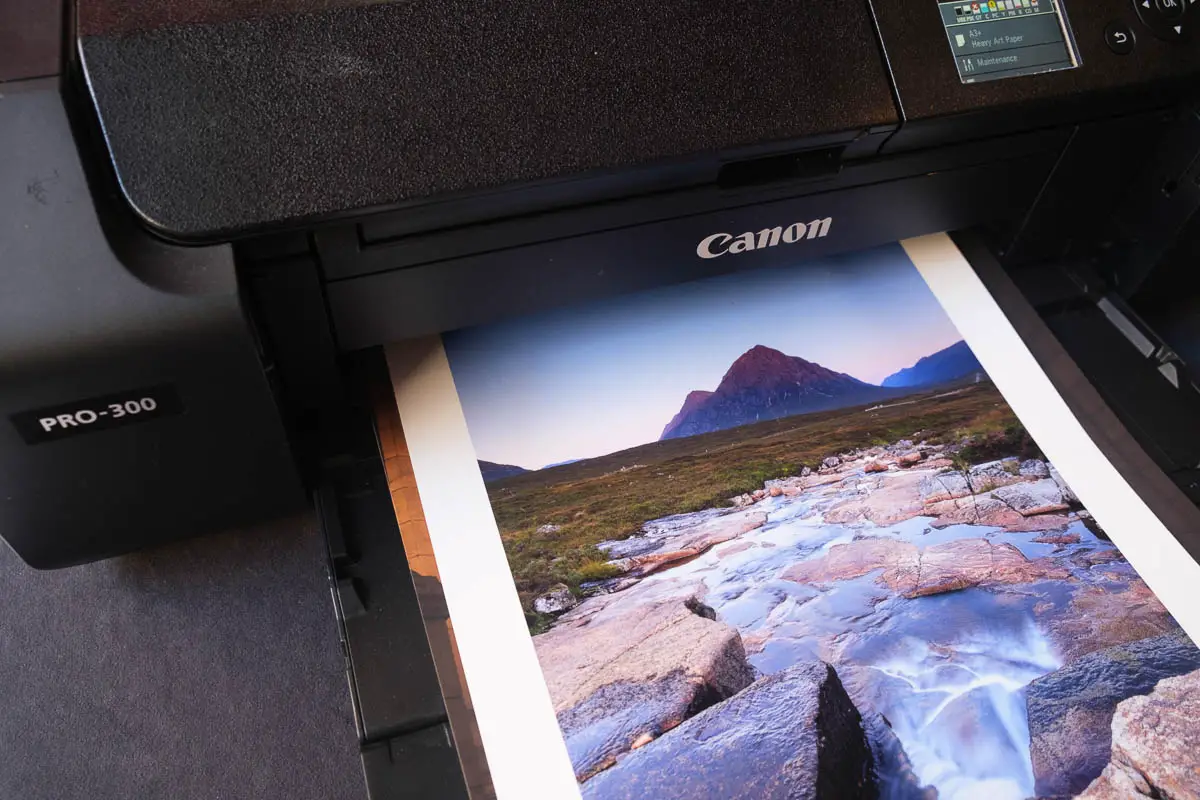






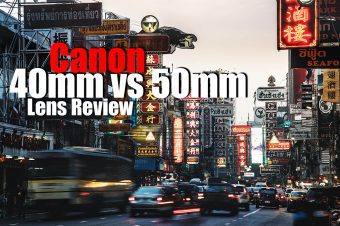
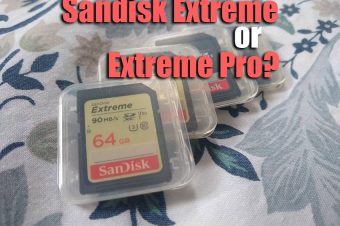

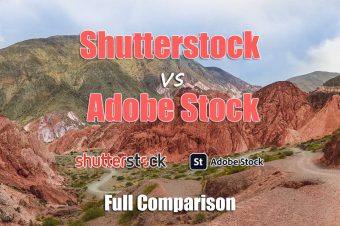
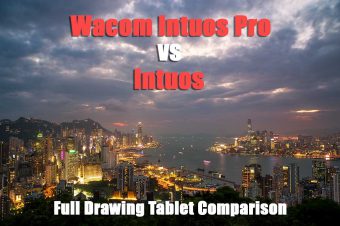
Leave a Reply